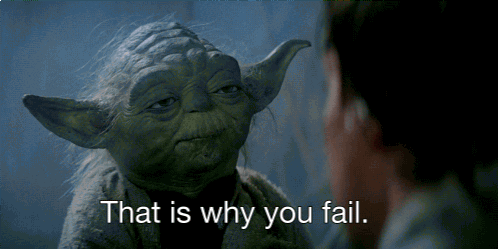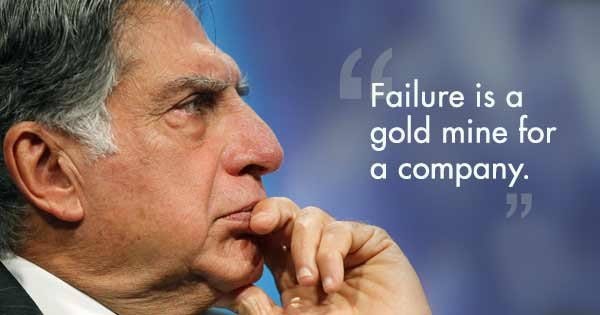Learning what NOT to do is just as valuable as learning what TO do
Stop hiding failures. They’re your best innovation asset.
Previously on Open Road Ventures: in the last episode of Venturing Insights, I shared insights from the latest episode of The Corporate Venturing Podcast. If you missed it, you can catch up here!
I was having a chat the other day with a Venture Clienting leader from an energy company in Austria and she told me something that stuck.
“When we report to the board,” she said, “the first KPI they always ask for is how many of our startup projects turn into long-term partnerships.”
Makes sense. That’s the tangible success metric everyone wants.
But then she paused and added, “Honestly? It’s just as important to show what didn’t work: the projects we stopped, the directions we learned not to pursue. That’s where we avoid wasting millions later.”
And she’s right.
In corporate venturing, the wins are great — but the failures, if managed well, often deliver the real strategic value.
Here’s what this is about:
Why tracking what doesn’t work builds smarter venturing programs
How leaders like Amazon, Google X, and Intuit extract value from failures
Practical KPIs for turning setbacks into competitive advantage
Venturing: More than chasing financial wins
Corporate venturing tends to get sold as a shortcut to growth. Venture funds, startup partnerships, internal builders: all geared towards diversifying revenue, tapping new tech, cutting costs.
But let’s be real. Most of these bets are inherently risky. A lot won’t stick.
This brings the classic corporate dilemma: you need innovation to stay relevant, but hate burning cash on dead ends.
Thing is, those dead ends hold value too.

Forward-looking organizations treat corporate venturing as a lab for learning. They use it to uncover “what doesn’t work” long before bigger, riskier bets come into play.
McGrath and her team’s research nails the point: companies can wring value out of venturing, even in ambiguous, uncertain environments.
So, stop running ventures like extensions of the core business. Run them like experiments. Expect failures. Plan for them.
Failure isn’t optional — it’s baked into innovation
Sounds odd, maybe — but failure’s a feature, not a flaw, when you’re pushing boundaries.

“Not all failures deserve the same response — some are preventable, others are the price of learning.”
We’ve known this for decades. Every real innovation story involves bold ideas, testing… and yeah, some degree of crashing and burning.
Remember what the folks at 3M used to say? “Mistakes will be made.” Ed Catmull at Pixar called failures inevitable — part of doing new things, and worth their weight in lessons.
So why does corporate culture still choke on failure?
In a BCG survey, nearly a third of execs blamed risk-averse culture as the top innovation blocker. Makes sense — no one wants their career tied to a project that bombs. So people play it safe. They hide mistakes. Innovation gets suffocated quietly.
Harvard’s Amy Edmondson, who’s spent years studying this, doesn’t sugarcoat it: “The wisdom of learning from failure is incontrovertible… yet organizations that actually do it well? Extraordinarily rare.”
But some are getting it right.
Look at Amazon.
After the Fire Phone imploded, Jeff Bezos shrugged:
“If you think that’s a big failure… we’re working on much bigger failures right now.”
His logic’s simple: invention at scale needs failure at scale. A handful of wins cover hundreds of misses. But those misses feed the next big leap.
Or take Alphabet’s X, their moonshot factory. Teams that spot fatal flaws and kill projects early? They get bonuses. Public kudos, too. Astro Teller, who leads the outfit, spells it out:
“Stopping a bad idea early is a win when it teaches us something… clinging to a crappy project out of fear? That’s the real failure.”
Same mindset at Intuit, where they hand out “Best Failure” awards and throw failure parties. Co-founder Scott Cook gets it:
“Every failure teaches something important — maybe even plants the seed for the next big idea.”
Tata Group took it a step further with their “Best Failed Idea” prize, giving employees a green light to take calculated risks, without the blame game.
If you want real innovation, you need to make peace with failure — even invite it in. The only unacceptable failure is the one you didn’t bother learning from.
Measuring the flops — because what doesn’t work matters
We love our KPIs. But most corporate venturing metrics obsess over outcomes: ROI, revenue spikes, scaled-up startups.
Here’s the thing: if that’s all you track, you’re missing half the picture, especially early on when failures pile up fast.
Smart organizations are flipping the script, building metrics that surface the lessons, not just the wins.
Here’s what they’re tracking:
Experiments Run: Prototypes, pilots, proofs-of-concept. More tests = more learning.
Invalidation Rate: How many ideas or assumptions got scrapped for good reason? At Google X, over 100 projects were killed last year. That’s efficiency, not waste.
Lessons Learned: Are teams documenting insights — from every project? Are those lessons actually reused elsewhere? Some firms even track knowledge transfer like an asset.
Pivots or Stops: How often do weak projects get halted early? If nothing ever gets killed, odds are people aren’t speaking up. Amadeus’s incubator uses stage-gates to keep ventures honest.
Time to Validation: How fast can teams test critical assumptions and make the tough calls? At Google X, they run straight at the hardest parts early, to flush out the inevitable flaws.
Return on Failure (RoF): Maybe ROI flops — but did you squeeze valuable insight from the wreckage? Birkinshaw and Haas argue, failure hurts less when you max out the learning per dollar. Cheap tests. Deep lessons. That’s the math.
Venturing as an organizational learning engine
It’s a progression. Young venturing teams track:
Number of ideas generated
Experiments launched
Qualitative takeaways: what worked, what fizzled, what we learned
That learning-first approach runs alongside cultural KPIs like employee engagement or cross-functional collaboration.
Over time, as teams mature, metrics evolve: revenue, scaled ventures, ROI come into play. But learning stays central.
Antwerp Management School’s research makes it clear: early venturing is about learning velocity, not immediate financial wins. Mature programs got failures and successes under their belt — and systems to institutionalize the insights.
Turning hard lessons into smarter bets
Collecting lessons isn’t enough. They need to flow back into decision-making.
What you could do:
Run honest post-mortems on every dead venture
Share lessons widely — failure reports, internal blogs, whatever works
Treat every venture as a strategic experiment that yields usable data
Example: a corporate VC makes a bad bet on a startup. If they’re doing it right, they don’t just cut the check and walk away. They study what broke — tech flaws, market gaps, unmet customer needs — then recalibrate strategy.
As one venture-building leader puts it bluntly:
“Better to fail fast and redirect resources than to drag out the inevitable.”
When that happens, even so-called failures drive progress. Lessons fuel future bets. Talent and knowledge stay in the loop.
Some firms embed this learning rhythm deeper — adding “Key Learnings from Killed Projects” into quarterly reviews. They track patterns. Spot systemic blockers — maybe slow processes, poor early customer feedback, or cultural risk aversion.
Case in point: a Canadian study found risk-averse culture stalled innovation. Employees stuck to safe projects. Leadership had to reset the culture before meaningful KPIs could land.
The hidden ROI of failure
Corporate venturing is often pitched as a hedge: future-proof the business, dodge disruption, land the next growth curve.
But there’s another angle: future-proof through knowledge.
Every failed venture, if handled well, offers hidden ROI: hard-won insights that steer strategy, avoid dead ends, sharpen product-market fit.
Harvard Business Review puts it plainly:
“Rigorously extract value from failure… measure — and improve — your return on it.”
The best venturers:
Start small
Test bold assumptions early
Shut down projects once key learning’s banked
Sometimes, a “failed” project actually succeeds by saving the company from a pricier mistake and pointing toward better opportunities.
The organizations that consistently innovate are:
✅ Rewarding learning behavior, not just outcomes
✅ Building cultures where failure signals maturity, not incompetence
✅ Treating every venture, win or lose, as competitive intelligence
Global Corporate Venturing captured it:
“Some ventures will fail completely and must be terminated… but learning from them is essential to eventually get the wins.”
Or as Edison might say:
“We now know plenty of things that won’t work — and that gets us closer to what will.”
Before closing, I’ll leave you with this. Amy Edmondson explains the concept of Psychological Safety: the foundation that makes real learning from failure possible.
If leaders want to unleash individual and collective talent, they must foster a psychologically safe climate where employees feel free to contribute ideas, share information, and report mistakes.
Quick question for you:
How’s your team tracking the lessons from failure? Are they swept under the rug — or fueling your next smart bet?
Let me know.
As usual, a soundtrack for you:







"Failure’s a feature, not a flaw, when you’re pushing boundaries." - Love how you put this.
I've been reflecting on my first year in venture, and some of the greatest lessons I've learned this year have come from my failures. These failures have revealed flaws in my decision making skills, processes, and ways of thinking. But at the end of the day, they have only made me a better investor. At the end of the day, I'm grateful for these failures!